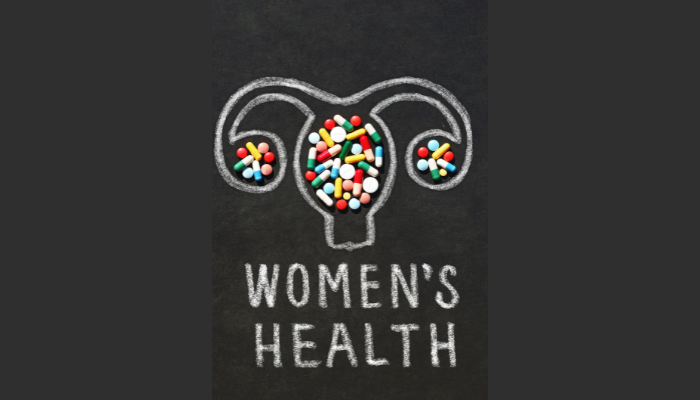Want to know more about a total abdominal hysterectomy? It is a surgical method where the uterus is removed via a lower abdomen incision. Partial hysterectomy procedures remove solely the uterus while the cervix remains intact. A total abdominal hysterectomy enables the removal of the cervix and uterus alike. A hysterectomy sometimes includes one or both ovaries being removed along with the fallopian tubes. This is a form of abdominal surgery in a way.
A hysterectomy is done through an incision in the vagina or what is known as a vaginal hysterectomy. This is otherwise done via a robotic or laparoscopic surgical method which makes use of thin and long instruments that are passed via a small incision in the abdomen.
When is a Total Abdominal Hysterectomy Recommended?
- When someone has a bigger uterus.
- The doctor wishes to examine any other pelvic organs for signs of illnesses.
- If the surgeon recommends the procedure over other forms of hysterectomy.
What is Treated by a Hysterectomy?
- Gynecologic cancer impacts the cervix or uterus, necessitating a hysterectomy. Other options may encompass both chemotherapy and radiation.
- Fibroids are also removed via a hysterectomy and they are uterine tumors that lead to anemia, bleeding, bladder pressure, or pelvic pain. Fibroids may be tackled via non-surgical procedures however surgical procedures are sometimes imperative.
- Endometriosis is another condition where the uterine lining grows externally from the uterus on the abdominal/pelvic organs, fallopian tubes, and ovaries. When things do not improve due to surgeries or medication, hysterectomy may be recommended by medical practitioners along with the removal of the fallopian tubes and ovaries.
- Uterine prolapse is when the uterus descends into the vagina, leading to the weakening of the tissues and ligaments. This may lead to incontinence and pelvic pressures along with tough bowel movements. A hysterectomy may be required for treating these issues.
- Surgery is sometimes the best option for tackling chronic pain in the pelvis. A hysterectomy does not offer relief from various kinds of pain in the pelvis and hence you should always take careful medical advice before going ahead.
- If there are irregular, heavy, or highly prolonged period cycles, then a hysterectomy may be necessary for some relief.
A hysterectomy means that the individual will not get pregnant in the future. A hysterectomy may be the only remaining option if there is cancer. Doctors may also recommend treatments of a non-invasive nature initially for endometriosis, fibroids, and uterine prolapse before resorting to surgery.
At the time of hysterectomy, the surgeon may conduct a process where both the ovaries and fallopian tubes are removed. Symptoms may include surgical menopause where the individual witnesses symptoms similar to menopause after completing the procedure. There are many sub-procedures involved, such as abdominal etching and others.
Major Risks
Some of the risks linked to a hysterectomy include the following:- High bleeding.
- Blood clots.
- Reaction to anesthesia.
- Infections.
- Urinary tract damages or damages to the rectum, bladder, other organs.
- Early menopause.
- Death in rare cases.
Preparation for a Hysterectomy
- You should first get all necessary details about the procedure from your doctor, along with all the necessary steps.
- Find out about the medication regime to follow before the procedure. Always inform your doctor about OTC (over-the-counter) medication and other supplements that you consume on a regular basis.
- Discuss the suitable anesthesia required during the surgery.
- Plan and work out the entire stay in the hospital. The procedure usually needs 1-2 days in general.
- A complete recovery may require a few weeks. You may have to restrict your activities after the procedure. Get suitable help at home if you feel fit.
A Guide to the Procedure
- The surgeon will detach the uterus from the upper vaginal area, fallopian tubes, and ovaries along with the connective tissues and blood vessels.
- The lower portion of the cervix is removed although it may stay in place at times.
- Additional pelvic organs and tissues may be removed at times, like the fallopian tubes and ovaries.
- Before the surgery, you may have to go through some tests including the following-
(a) Cervical Cytology or the Pap Test
(b) Biopsy that finds abnormal cells present in the endometrial cancer and uterine lining
(c) Pelvic Ultrasound helps in discovering the presence of ovarian cysts, endometrial polyps and the sheer size of fibroids in the uterus
- You will have to bathe with soap before the surgery as recommended by the doctor. Pre-operative rectal and vaginal cleaning may also be carried out.
- Just before the surgery, you will get intravenous antibiotic medicine for lowering infection risks that happen post-surgery.
- The hysterectomy is usually done in a state of general anesthesia and you will wake up after the surgery.
- The urinary catheter will first be passed via the urethra for emptying the bladder. The catheter will stay in place at the time of surgery and for a small duration thereafter. The vagina and abdomen are subsequently cleaned before the procedure with a sterile solution.
- An incision or cut is then made by the doctor for the hysterectomy in the lower abdomen. It could either be a horizontal or vertical incision.
- Post-surgery, you will be tracked for any pain symptoms, while consuming medication for infections and pain.
- You may have to stay in the hospital for 1-2 days and sometimes longer. Vaginal bleeding will necessitate sanitary pads. While the incision will heal with time, there will be a scar that remains on the abdomen.
To-Dos
- You should get sufficient rest.
- Avoid lifting heavy objects.
- Stay active while bypassing hectic physical activities.
- Wait for a few weeks before engaging in sexual activity.
- Follow the recommendations of your doctor carefully.
What will Change
- There will be no more menstrual periods.
- You will have some relief from earlier symptoms.
- You will not get pregnant.
- You will witness the onset of menopause after the removal of the ovaries.
- If you go through a hysterectomy and retain the ovaries, then menopause may come about at a younger age than normal.
- If there is a partial hysterectomy, i.e. the cervix stays in position, then you will still have cervical cancer-linked risks. Pap tests will be regularly needed in this regard.



